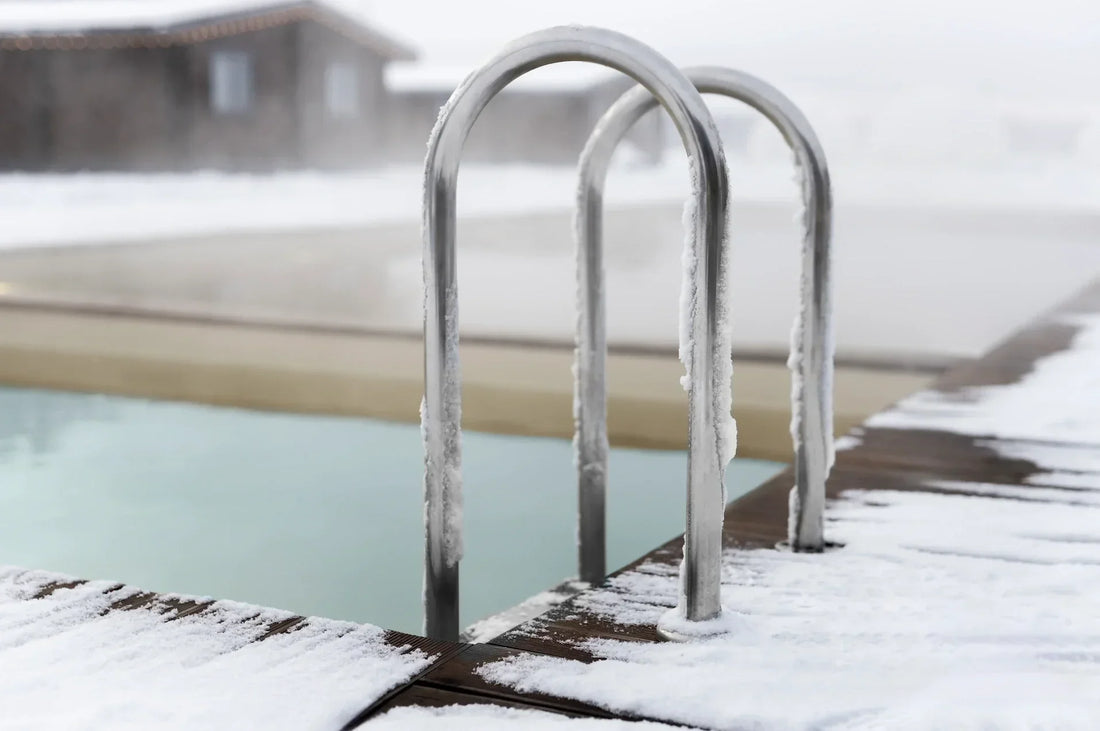Cold Plunge Before or After Workout? The Complete Guide

Cold plunging has exploded in popularity as athletes, biohackers and wellness enthusiasts chase its physical and mental rewards. But one debate remains central to anyone building a routine: cold plunge before or after workout?
The timing of your plunge can change how it affects recovery, endurance and even long-term muscle growth. This guide explores the science, looks at each timing option and helps you choose the schedule that fits your goals best.
If you want to bring cold therapy into your own space, at Plunge Crafters, we offer something for everyone. Explore our DIY products and Plug & Plunge tubs to see which option fits your lifestyle.
The Science of Cold Exposure
Cold water immersion activates a stress response that impacts nearly every system in your body. When you plunge, you experience:
- Vasoconstriction (narrowing of blood vessels)
- Reduced inflammation and muscle soreness
- Activation of the sympathetic nervous system
- Increased alertness and improved mood
- A hormonal cascade involving dopamine, norepinephrine and cortisol
These responses can support recovery, build resilience, improve focus and regulate the nervous system. However, their effectiveness can depend heavily on when you plunge.
These effects are consistent, but their usefulness depends on timing. That is why so many people ask should you cold plunge before or after workout.
If you are new to cold plunging, our page explains our mission and why we design equipment that makes these benefits more accessible for athletes and wellness enthusiasts.
Morning Cold Plunge Benefits
Cold plunging in the morning has become a staple for many professionals and high performers.
Mental Clarity and Energy
Cold exposure spikes dopamine, lifting mood and focus for hours. For anyone who wants a natural alternative to coffee, this practice delivers a clean energy boost. Many users describe it as stepping out of the water with sharper thinking and higher motivation.
Better Sleep at Night
Morning cold plunges wake the body up early, which can help regulate your circadian rhythm. Your internal body clock thrives on consistency, and cold exposure is a strong signal to “start the day.” By evening, this often translates into faster sleep onset and deeper rest.
Stress Adaptation
By starting the day with a challenging stimulus, your body becomes more resilient to daily stress. Over time this builds a calmer, more adaptive mindset. The nervous system becomes less reactive to minor stressors, which can improve both mental and physical performance.
Who Benefits Most
Morning plunges are great for busy professionals, students and parents who want to build discipline and mental clarity before tackling their day. They also serve anyone sensitive to stimulants, providing natural energy without caffeine.
To build consistency, create your own DIY setup. Having a plunge at home makes it easy to stick to a morning routine without relying on gym access.

Cold Plunge After Workout: Recovery and Repair
For endurance and high-intensity athletes, post-workout plunges are a proven recovery tool.
Reduce Inflammation and Soreness
Cold immersion limits muscle damage and lowers inflammation. This means less soreness the next day, allowing you to train consistently. For marathon runners, cyclists and HIIT athletes, this is one of the biggest advantages.
When to Delay Your Plunge
If you are lifting weights to build muscle, jumping into cold water right after can reduce the body’s natural anabolic response. To avoid interfering with growth, wait at least 4 hours after training. This lets the body complete its natural muscle-building cycle before introducing a recovery intervention.
Multi-Session Training Days
Athletes who train more than once per day often plunge after the first workout. It resets energy levels and reduces fatigue so the second session feels sharper. For example, fighters and swimmers often rely on this strategy to stay fresh across multiple daily sessions.
This section speaks directly to anyone wondering “should I cold plunge before or after workout,” as the answer often leans toward post-training, especially for endurance or conditioning.
If convenience matters, our plug and plunge tubs offer a ready-to-use option with no complicated setup.
Cold Plunge Before Workout: Energy and Performance
Plunging before exercise is not as common, but it comes with powerful benefits.
Boost Endurance in the Heat
Cooling the body before workouts lowers core temperature and reduces perceived exertion. Endurance athletes training in hot environments often find they last longer and perform better. Pre-cooling is especially valuable in sports like running, cycling and soccer where heat can limit performance.
Natural Performance Enhancer
Cold exposure sharpens focus, increases drive and prepares the nervous system to perform. Many users compare the mental lift of a pre-workout plunge to a strong cup of coffee, but without the crash.
Protect Muscle Growth Potential
Because you are plunging before exercise, you do not interfere with the body’s protein synthesis like you would with immediate post-lifting plunges. This is why so many athletes seeking size gains experiment with pre-workout plunges.
This is why so many people ask is a cold plunge better before or after a workout. If performance and endurance are priorities, plunging before may be the smarter move.
To keep your setup consistent, many athletes choose cold plunge water chillers that will help maintain precise temperatures no matter the climate.

Special Considerations for Timing
Timing matters more than many realize. Here are a few rules of thumb:
- Strength training: wait at least 4 hours after lifting before plunging
- Frequency: plunging 1-2 times per week may be more effective than daily post-workout plunges for improving body composition
- Evening plunges: cooling down before bed can improve sleep, but avoid plunging within 1-2 hours of bedtime to prevent overstimulation
For those weighing budget concerns, our HSA/FSA program may cover the cost of a plunge system, making it even more accessible.
Personalizing Your Routine
There is no single best schedule. The best time to cold plunge before or after workout depends on your unique training style and recovery needs:
- Pick morning plunges if you want energy, mood elevation and circadian rhythm support
- Pick post-workout plunges if your focus is recovery, soreness reduction or training twice in one day
- Pick pre-workout plunges if you train in the heat, focus on endurance or want a caffeine-free energy boost
This is why so many athletes debate if it is better to cold plunge before or after a workout. The truth is that both have benefits, but the right choice depends on your goals.
If you want personalized guidance, you can always contact us for tailored advice on routines and setups.
Industry Insight for DIY Cold Plungers
If you own a cold plunge at home, timing becomes far easier to experiment with. Instead of working around gym hours or spa appointments, you can step into your tub whenever it fits your schedule.
A home setup also makes it easier to track results. You can pay attention to how your body feels after different plunge times, adjust temperature and duration to fit your tolerance, and gradually build a routine that supports both your training and your lifestyle. Many athletes find that this control helps them stay consistent, which is the real key to long-term cold exposure benefits.

Final Thoughts
The debate over cold plunge before or after workout is not about finding one universal answer. It is about matching the practice to your goals.
- Morning plunges deliver clarity and mood benefits
- Pre-workout plunges enhance endurance and performance
- Post-workout plunges reduce soreness and speed recovery
By personalizing your approach, you can decide for yourself when it feels best. Cold water immersion is not just about recovery, it is about building consistency and resilience into your training lifestyle.
So, should you cold plunge before or after a workout? The answer is to experiment with both. Observe how your body responds and make adjustments. Cold plunging is powerful because it is adaptable, and with your own setup at home, you control the timing.
Ready to make cold therapy part of your daily life? Explore Plunge Crafters today and find the plunge solution that fits your goals.

